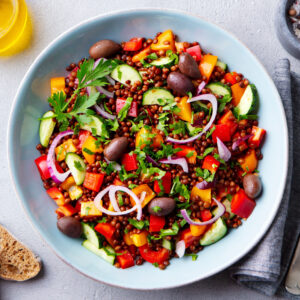Transform Your Life with the Spellbinding Power of Magical Foods
Nature has made some foods whose use is no less than a miracle. If we use them in daily life, then maybe we can say goodbye to many medicines from our lives forever. Yes, such miraculous food is present in this universe which is food as well as medicine. In Ayurveda, it is being used for so many years to make medicines. But today in the world of processed food we have forgotten some such rare foods or our thinking has become such that can anyone eat them? I would like to discuss some such rare food in this article.
Moringa-The miracle tree
Moringa oleifera is a fast-growing, drought-resistant tree of the family moringaceae, native to the Indian subcontinent. Common names are Moringa, Drumstick tree, Horseradish tree, and Ben oil tree.
It is one of the greatest plants to use for a holistic health experience. It has a variety of health benefits. It is a treasure trove of Vitamins and minerals. This is a kind of tree whose leaves, flowers, and fruits all have some medicinal value. The herb moringa is used to treat a variety of health conditions including Arthritis, anemia, respiratory disease, epilepsy, high blood pressure, diabetes, stomach and intestinal ulcers, kidney stones, heart problems, thyroid disorders, bacterial fungus, and viral infections.
It contains seven times more vitamin c than oranges, four times more vitamin A than carrots, and four times more calcium than cow’s milk.

In 2008 the National Institute of Health called Moringa ‘plant of the year’.
Nutritional value of Moringa:
100 gms of moringa leaves contain-
Protein-6.7 gms
Calcium-440 mg
Phosphorus-70 mg
Vitamin c-220 mg
How to use -Powder of moringa leaves (boil them with water), moringa juice, moringa tablets /capsules, moringa tea, moringa pods.
Amla-The miracle fruit
Amla’s home is in the subtropical regions of India, where it resides for centuries. Amla-gooseberry, a powerhouse of nutrients, is consumed in many forms in India from pickles, murabba, juice, chyavanprash, rasayanas to name a few. A cardiovascular tonic, an immunity booster, has anti-oxidant and anti-inflammatory properties.
Amla has incredible medicinal value. It promotes immune function, good for liver health, kidney health, gut health, hair health, and skin health. It supports healthy blood glucose, aids weight loss, lowers cholesterol level, and support cancer treatment too.
Nutritional value of Amla:
The nutritional value of 100 gms of edible amla is-

Kcal-58
Fat-0
Fiber-3 gms
Calcium-50 mg
Iron -1.2 mg
Thiamin(B1)-0.03 mg
Riboflavin(B2)-0.01 mg
Niacin(B3)-0.01 mg
Vitamin c-600 mg
How to use- Concentrated juices, Amla powder, pickles, murabba, capsules, facial cream, shampoo, oil, hair treatment.
Lotus stem-a versatile vegetable
The Lotus stem is the edible rhizome of the lotus plant, a perennial aquatic plant that grows beautiful pink or white flowers. Native to Asia, Australia, and parts of the middle east. It is commonly known as Kamal kakdi and is widely consumed as a vegetable in India as well as in other Asian countries. It aids in digestion, promotes weight loss, is good for hair and skin, prevents water retention, and reduces stress as a rich source of vitamin B.

Nutritional value of Lotus stem:
It has high potassium content, rich in vitamin c, is loaded with Vitamin B, particularly Niacin, is high in fiber, and is low in calories.
How to use- Lotus stem curry, lotus stem fish, kebabs, pickles, snacks, salads, desserts, and drinks.
We have overlooked numerous concealed foods that are not only a source of nutrition but also have medicinal properties.
Don’t be a slave to your taste buds; Become a slave to your health buds.
Meena Chugh is a certified dietician and nutritionist








